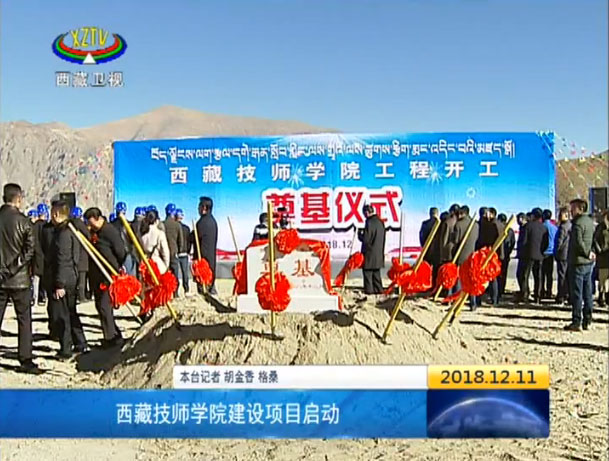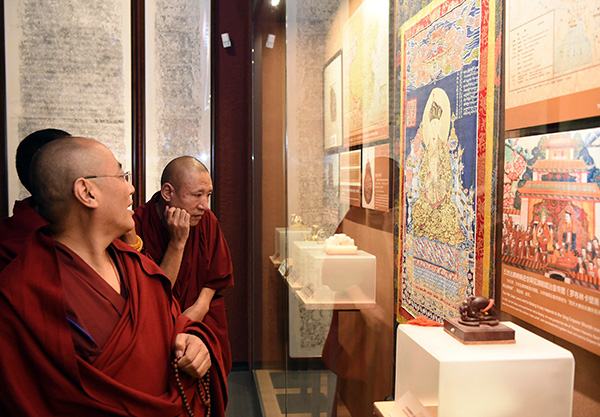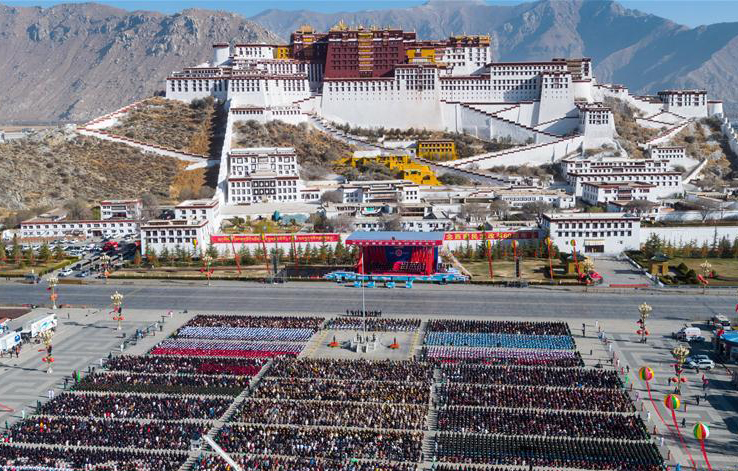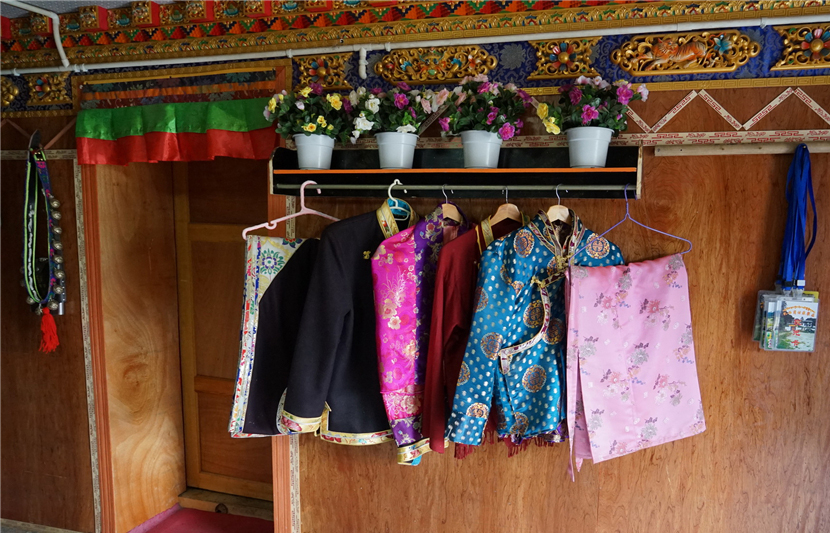Efforts underway to map Tibet's Jokhang Temple
Researchers in southwest China's Tibet Autonomous Region are mapping Jokhang Temple in Lhasa, the regional capital, amid efforts to conduct research into the UNESCO cultural heritage site.
The project, launched last November, has completed detailed mapping of wooden doors in the temple's main hall as well as corridor columns, according to the regional institute of cultural relics protection, which leads the project.
"It is so far the most comprehensive and in-depth research into Jokhang Temple," said Pendon, head of the institute's protection research office.
Apart from mapping the temple complex, the research team will use carbon-14 technology to date the temple's halls in an effort to establish a database of information about the temple buildings, said Thubten Tsenam, a researcher from the team.
Tashi Chodron, another researcher, said the team had visited the Tibet regional archives, the regional library and the National Library of China in the past four months to consult a large body of literature on Jokhang Temple.
Built in the seventh century, Jokhang Temple is home to many historical relics and much typical Tibetan architecture. It was added to the UNESCO World Heritage List in 2000 as part of the historic ensemble of Potala Palace.
The project is expected to finish in 2025.
Tibet Stories

An Indian reporter's impression on Tibet
"I feel that China's future is bright," Anil said.







